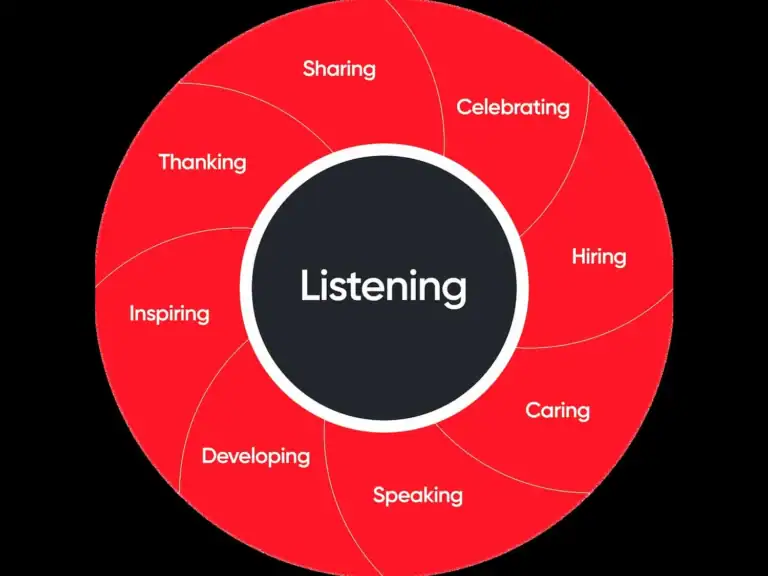How to Retain Women In The Workplace.


Rawan Wehbe
To recruit and retain this important demographic, follow in the footsteps of the Best Workplaces for Women.
Most women in today’s workforce are recruitable.
Based on research Fifty-four percent of working women say they are open to a new job in the next six months, one in 10 women said they’d like to leave their job, but don’t feel they can. *According to a July 2022 Great Place To Work® market research survey of nearly 4,200 workers.
The typical Middle East workplace is not meeting the core needs of women in terms of fair pay and promotions, and healthy emotional cultures, according to the survey.
That’s a stark difference to what women experience at companies on the Fortune Best Workplaces for Women™ in 2022 list, where gender gaps across nearly every measure of the employee experience are nearly nonexistent. And where a staggering 90% of women say they plan to stay at their jobs a long time.
“We see gender gaps decrease at great companies because they’re creating great cultures for all employees,” says Michael C. Bush, CEO of Great Place To Work.
Creating gender diversity with equality in workplace cultures will help you remain competitive and better positioned to take advantage of the hiring pool & & of course by competing with best companies.
Here’s what to focus on:
Want to create a diverse, equitable, and inclusive workplace.
Build an inclusive workplace that will unlock better team collaboration, improved innovation and increased financial performance with Emprising™ by Great Place to Work®.
1. Meet the baseline of fair pay and promotions.
We measured employees on 59 difference aspects of their workplace culture, including credibility, respect, pride and camaraderie. Among these, fairness and equity revealed the biggest gaps between women’s and men’s workplace experiences.
Fair pay, arguably the most basic need of any worker, is one of the biggest disparities between genders at a typical workplace: 45% of women report fair pay compared with 56% of men. At Best Workplaces, 81% of women say they get paid fairly, with no significant difference compared to their male colleagues.
Women are 40% more likely to stay at their jobs when paid fairly.
“These workplaces work hard to support women as much as men because they understand that equal pay and growth opportunities attract great employees and increase their loyalty and pride.” – Michael Bush, CEO, Great Place To Work
2. Offer a healthy psychological workplace.
In addition to fair pay and promotions, an emotionally healthy culture was the third biggest area women struggled with a typical workplace: 49% of women characterized their workplace as psychologically healthy compared with 54% of men.
Healthy workplaces give employers competitive advantage. Women are 50% more likely to stay at their jobs and twice more likely to help recruit if they feel their workplace is emotionally healthy.
3. Provide meaningful work.
Great Place to Work research reveals what drives women to stay at their companies. There are many factors, but purpose tops the list.
That said, employers might be tempted to skip ahead to meaningful work and think that will benefit women. But purpose must be built on the core foundation of fair pay and promotions.
Women are three times as likely to stay in their jobs if they believe their work has special meaning and is “not just a job.” Women are not unique in this respect. Purpose is the No. 1 retention driver at great companies by industry, generation, and geography
4. Support women wherever they work — remote, onsite, or hybrid.
Women working remotely have the best experience compared with hybrid or onsite workers when it comes to fair pay and giving extra to their work but struggle with feeling like they make a difference (53%) compared with onsite workers, who had the best experience with this at 63%.
There is no significant difference for women in how supported they feel with work-life balance between hybrid, onsite, and remote work. Work location is not a panacea for work-life balance support. Location itself is not a fix.
So, leaders can build a better workplace for women? The Answer is Yes, here is the way to start:
- Learn the gaps. Get acquainted with research on women’s experience in the workplace. Conduct regular employee surveys and use the data to initiate change.
- Set clear expectations. Be transparent with employees about promotion criteria. Whenever someone is promoted, leaders should be able to point exactly to the factors behind it.
- Encourage growth. Don’t just give projects to employees who can “get the job done.” Prioritize learning and development, and consider team members who can grow from such opportunities.
- Ask questions. Find out directly from your team members what types of opportunities they’d like to be a part of, rather than assuming.
- Track opportunities. Actively track which team members you’ve given opportunities to, so that you can ensure equal access to everyone.
- Be an ally. Participate in an employee resource group or broach topics of the gender experience with other leaders.
- Ensure representation. All employees should have representation at the senior leadership level. Everyone wants to hear from people who are “like them.” You can’t be what you can’t see.
Overall, our research shows that men are having a better experience at work than women. And while the gender gap at the Best Workplaces for Women is significantly smaller than at other organizations, it still exists. This means there’s still plenty of work to be done.
What steps will your workplace take?
Get Insights In Your Inbox
Access the latest news, research, and best practices to inspire your great workplace journey.

What Makes Napco a Great Place To Work®? It Starts with Family Spirit and Ends with Impact
What Makes Napco a Great Place To Work®? It Starts with Family Spirit and Ends with Impact About Napco National Napco National has been part of the Saudi industrial landscape since 1956,

9 High-Trust Leadership Behaviors That Build Great Workplaces
Caring, Celebrating, Developing, Employee Experience, Hiring, High-trust leadership, Inspiring, Leadership & Management, Listening, Managerial Communication, Sharing, Speaking, Thanking Every employee should take these behaviors to heart whether or not they are people leaders. I often get asked

The Evolution of Workplace Culture: Why It Matters More Than Ever in 2025
One universal workplace experience is the emotional imprint left by an organization—its energy, trust, and sense of belonging. Although experts may agree on what constitutes

How Purunity Embeds Goodness into Work and Culture
People go where there is pride in the work they do. At Purunity, this sense of pride stems from our core mission: driving innovative and

Powerful Strategies to Cultivate DEI in Omani Workplaces
DEI is not only a buzzword! Developing a diverse, equitable, and inclusive work environment shows that leaders care about their employees, appreciate, and respect their

4 Strategies to Promote Resilience in UAE Workplaces
Cultivating resilience in the workplace is the key to empowering employees and boosting their confidence. It is important for both employees and their leaders. Resilience
